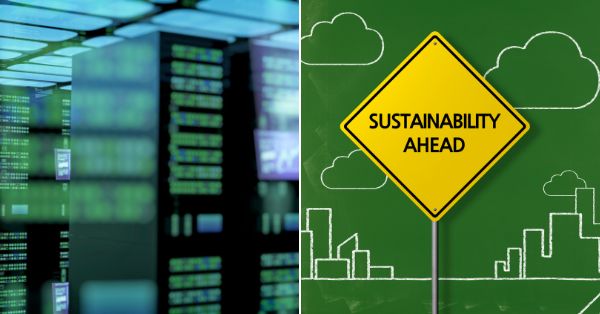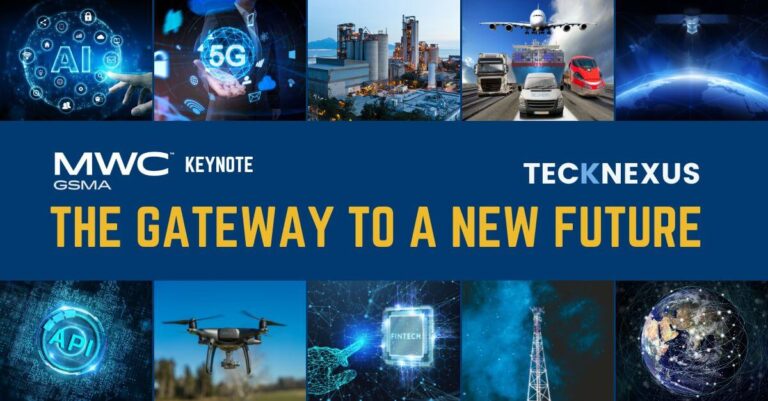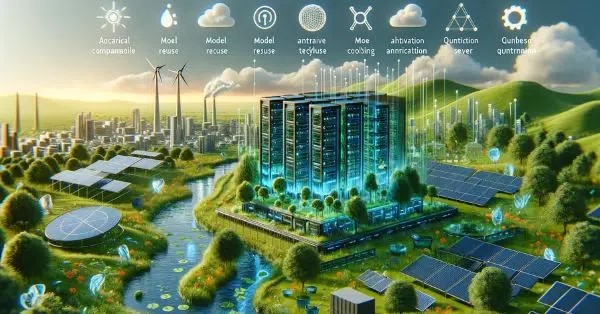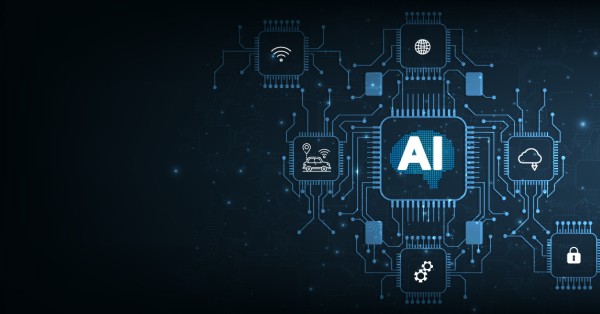AI’s Expanding Role in Data Centers and Sustainability Challenges
The impact of AI on the world continues to fuel intense discussions. While many highlight the technology’s potential to boost efficiency for businesses and individuals alike, concerns around security, trust, and environmental consequences are equally prominent.
Within this context, the data center industry is taking a proactive stance. Instead of waiting for regulations or public pressure, operators are actively shaping strategies to maximize AI’s benefits while minimizing its risks.
According to Goldman Sachs, data center power demand could surge by 160% by 2030. Meanwhile, McKinsey predicts an annual increase in data center capacity between 19% and 22% through 2030. Reflecting this trend, Keysource’s State of the Industry Report found that 40% of data center operators now cite AI as their top priority for the coming year. Despite positive momentum, challenges around energy sourcing and environmental impacts remain. The next five years will be critical for defining how data centers and AI evolve together.
Adapting Data Centers to Current AI Workload Demands
Today, data centers are racing to adapt to fast-changing customer needs driven by AI. Operators must ensure their facilities can support AI workloads, even when customer usage patterns rapidly evolve.
The stakes are high. Organizations rely on AI for everything from operational automation to advanced analytics. If data centers can’t keep pace, innovation risks being throttled.
It’s not just about capacity either. Low latency, reliability, and scalability are equally vital to support the explosion in AI-based services. So, how is the sector ensuring that AI’s potential continues to be realized?
Brownfield vs. Greenfield: Strategies for AI-Ready Data Center Growth
Data center expansion typically involves two options: brownfield sites or greenfield projects.
Brownfield sites — redeveloping existing industrial locations — have become essential for meeting today’s AI-driven demand. Building on previously developed land enables faster timelines. Often, parts of the existing infrastructure can be repurposed, reducing costs and embodied carbon footprint.
This agility is crucial. Without brownfield developments, the current surge in AI adoption could have overwhelmed data center capacity. In effect, brownfield sites are the industry’s short-term solution to meet immediate demand.
In contrast, greenfield sites offer longer-term scalability. These projects, built on undeveloped land, provide a blank canvas. Designers can incorporate the latest in Edge/MEC, power, and cooling technologies, making greenfield sites inherently more flexible for future needs.
Key trends in greenfield development include:
- High-density rack configurations tailored for AI workloads
- Advanced cooling systems such as liquid immersion
- Renewable energy integration from the ground up
- Ultra-low latency connectivity architectures
Both strategies are crucial. Brownfield enables fast responses to today’s needs, while greenfield projects future-proof the industry for tomorrow’s AI demands.
Why Sustainability is Central to Data Center Expansion in 2025
While expanding to meet AI’s needs, data centers must also prioritize sustainability. Environmental considerations now play a major role in every new build or retrofit project.
Greenfield projects offer advantages in this respect. Because developers can select optimal locations, many new data centers are built near renewable energy sources like wind farms or hydroelectric plants. There’s also greater scope for designing energy-efficient systems from scratch.
For instance, Keysource recently partnered with the city of Manchester on a greenfield data center project that will feed waste heat from servers into a district heating network. This approach not only reduces carbon emissions but also supports local community energy needs.
However, brownfield developments also offer environmental benefits. By reusing existing buildings and materials, operators minimize the use of carbon-heavy construction materials like concrete and steel. This helps reduce the overall embodied carbon associated with a facility.
Both brownfield and greenfield strategies demonstrate how the industry is trying to balance AI-driven expansion with urgent sustainability goals.
Collaboration: The Key to Sustainable and Scalable AI Infrastructure
The rapid evolution of AI wouldn’t have been possible without innovation across hardware, software, and infrastructure. Similarly, data centers have evolved to support this growth — and continued collaboration will be vital.
Technology leaders and data center operators must continue sharing insights on:
- Cooling innovations for high-density AI compute
- Modular designs for faster deployment
- Renewable energy sourcing and grid management
- Best practices for achieving net-zero carbon goals
Working in isolation is no longer an option. Data center builders, technology providers, governments, and local communities must form closer alliances.
For example, public sector engagement can ensure zoning regulations and permitting processes align with sustainable development principles. Local community involvement can help identify shared energy use opportunities, like waste heat recycling or energy microgrids.
Ultimately, the goal is to create a future where AI innovation, net-zero sustainability, and community benefits coexist, powered by smarter, greener data centers.
The Future of Data Centers: Powering AI, 6G, and Beyond
The data center of 2030 will not look like the data center of 2020. Instead of passive facilities housing servers, they will be active enablers of technologies like 6G, the Metaverse, Edge Computing, and even Quantum Computing.
Achieving this transformation requires relentless innovation and a holistic approach. Operators must think beyond rack space and energy consumption. New metrics for success include community impact, renewable energy sourcing, and alignment with global climate goals like the Paris Agreement.
The sector already recognizes this responsibility. By continuing to innovate and collaborate, data centers will remain the critical engine driving AI-powered technological advancement and sustainable business growth.
Meeting AI Demand Responsibly: The Future Path for Data Centers
As the race to integrate AI into every aspect of business and society accelerates, the data center industry stands at a crossroads. Success will be defined not just by how much compute capacity operators can deliver, but by how responsibly they manage that growth.
Balancing immediate AI-driven demand with longer-term sustainability is not easy, but it’s necessary. Brownfield and greenfield developments each offer important pieces of the puzzle. Collaboration across the entire ecosystem is essential.
Ultimately, the future of AI, business, and community progress all hinge on a resilient, sustainable, and innovative data center infrastructure.
And the work is already well underway.


















